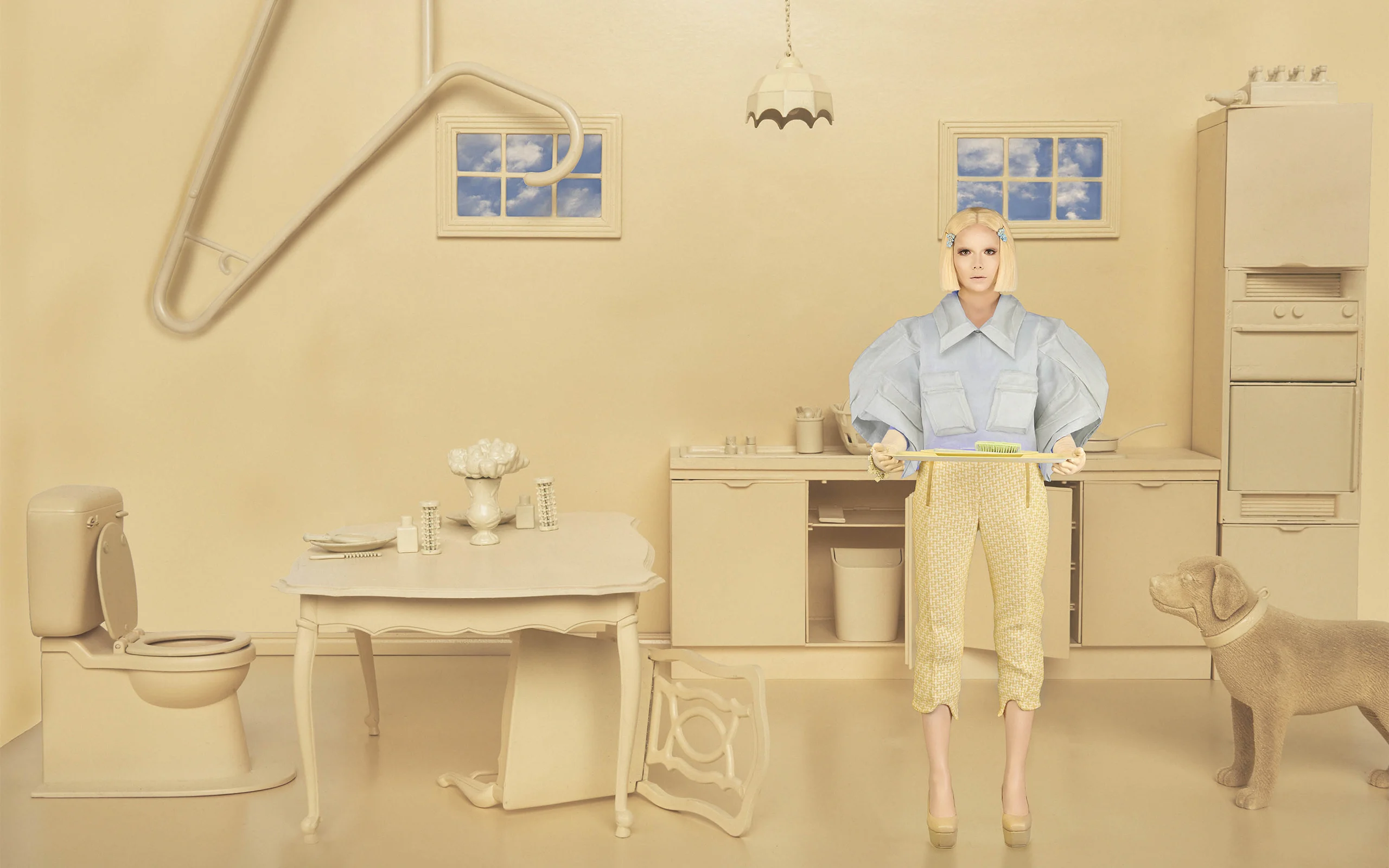
In a world in which artists sometimes struggle to find their voice, it is refreshing to see someone who has nailed it down so perfectly. Carolina Mizrahi, a London-based photographer, has a distinct style mixing color, texture and all manner of materials into beautifully designed sets. The women she portrays almost look like Barbies living in a dollhouse but by changing their skin color and surroundings, Carolina adds a surreal tone to their appearance. In anticipation of her first solo show we spoke to Carolina about her brilliant work.
You mentioned you want to comment on the representation of women in the media – how do you feel women are usually portrayed and how does that translate to your photography?
Women have made great progress in all aspects of life, but their depiction in the media is still pinned to patriarchal stereotypes and ideologies that do not reflect reality. Each women holds idealized beauty standards based on cultural and social values related to a certain historical period, against which she measures her appearance. My portraiture series aims to represent women in an inclusive and diverse way, portraying different types of beauty, race and age.

Why have you decided to show your subjects and their surroundings with different skin tones and colors? How do you select which colors to use?
I play with color to drive the viewer’s attention to certain aspects of my pictures, playing with different meanings associated with each shade. It’s a powerful communication tool especially when aligned with other symbolic signs.
As an example, on a shoot for Vogue Italy which was really red, the make-up was contrasting with the model’s delicate face, while the white and pink were sweetening it down. It’s a body of work made of contrasts, all visual signs were synchronized in order to balance each other, from styling to hair, make-up to set design.

How do you set up a shoot? Do you work with make-up artists or do you manipulate the imagery mostly after shooting?
Each project has a different approach depending on different deadlines and briefings. Generally, I like to start developing my ideas with some theoretical research followed by visual investigation on movies, books, classic and contemporary art connected to the theme. Most of the “painting” is done on the day, depending on assignment we might finish some details in post production. I generally collaborate with Scarlett Burton, who is an amazing make up artist; we usually work on some tests prior to the shooting date in order to find the best shades for each skin color.
In your upcoming show you collaborate with a pianist and a florist – can you explain why you decided to mix your photography with music and flowers?
Collaboration is a key aspect of my practice.The idea of inviting other artists to work with me on my first solo show in London comes as a natural development of my work. Set design is an important side of my creations, the immersive exhibition aims to play with the viewer’s senses mixing artworks, installation and music in a contemporary Garden of Eden. With this in mind, I’ve invited Yan Skates to bring the planned flower’s installations to life and Karim Kamar to play the piano, translating the photographs into music.

